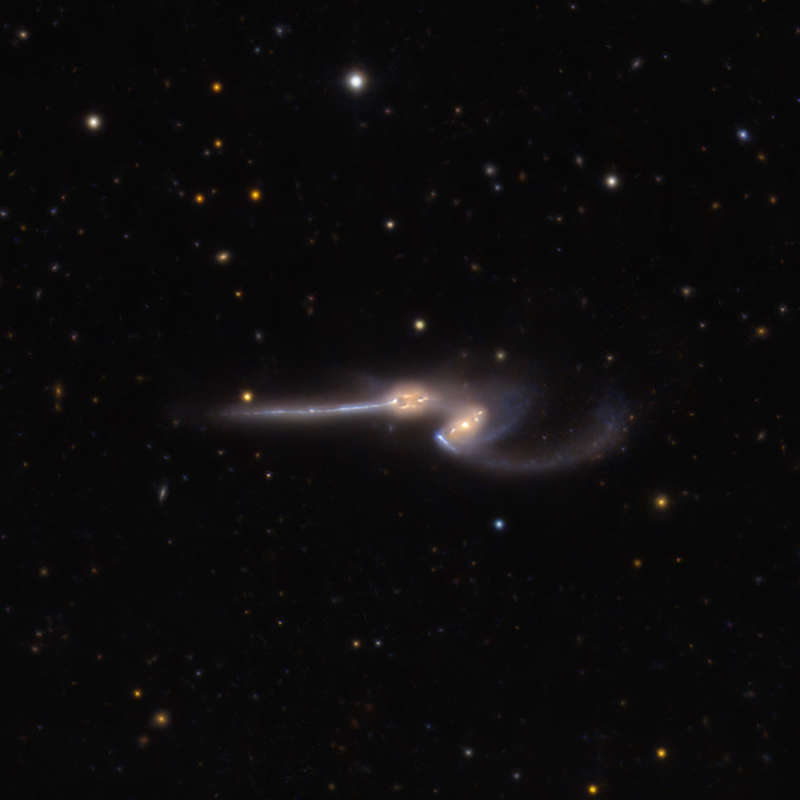Credit & Copyright: Bruce Waddington
Explanation:
These
two mighty galaxies are pulling each other apart.
Known as The Mice because they have such long tails, each large
spiral galaxy has actually passed through the other.
Their long
tails are drawn out by strong
gravitational tides rather than collisions of their
individual stars.
Because the distances are so large, the
cosmic
interaction takes place in slow motion --
over hundreds of millions of years.
They will probably
collide again and again
over the next billion years until they coalesce to
form a single galaxy.
NGC 4676 lies about 300 million
light-years away toward the constellation of Bernice's Hair
(Coma Berenices)
and are
likely
members
of the Coma Cluster of Galaxies.
Not often imaged in small telescopes,
this wide field of view
catches the faint tidal tails several hundred thousand
light-years long.
1999 2000 2001 2002 2003 2004 2005 2006 2007 2008 2009 2010 2011 2012 2013 2014 2015 2016 2017 2018 2019 2020 2021 2022 2023 2024 2025 |
Yanvar' Fevral' Mart Aprel' Mai Iyun' Iyul' Avgust Sentyabr' Oktyabr' Noyabr' Dekabr' |
NASA Web Site Statements, Warnings, and Disclaimers
NASA Official: Jay Norris. Specific rights apply.
A service of: LHEA at NASA / GSFC
& Michigan Tech. U.
|
Publikacii s klyuchevymi slovami:
colliding galaxies - stalkivayushiesya galaktiki - NGC 4676
Publikacii so slovami: colliding galaxies - stalkivayushiesya galaktiki - NGC 4676 | |
Sm. takzhe:
Vse publikacii na tu zhe temu >> | |
